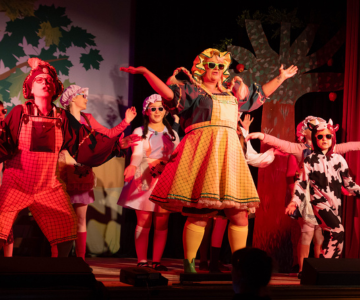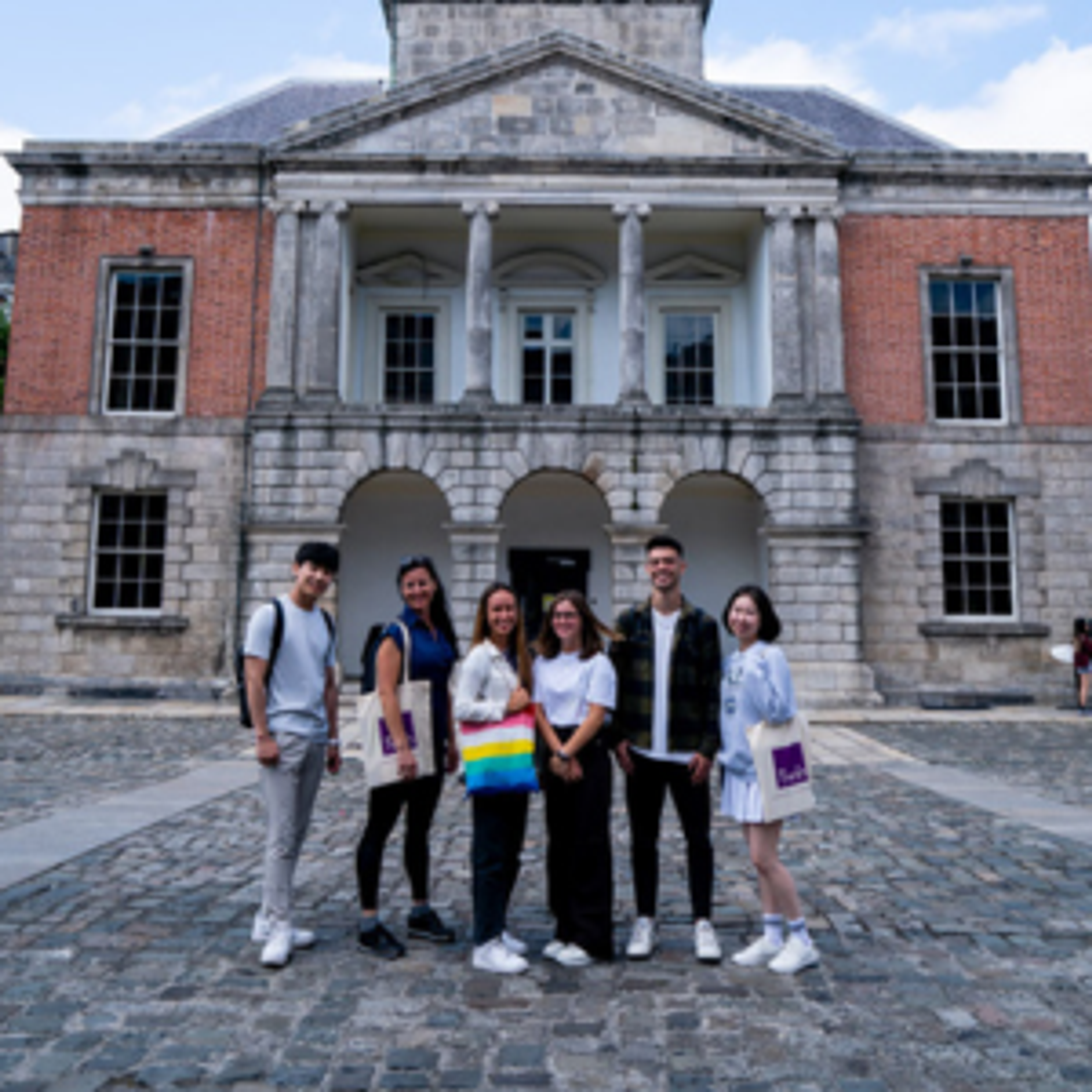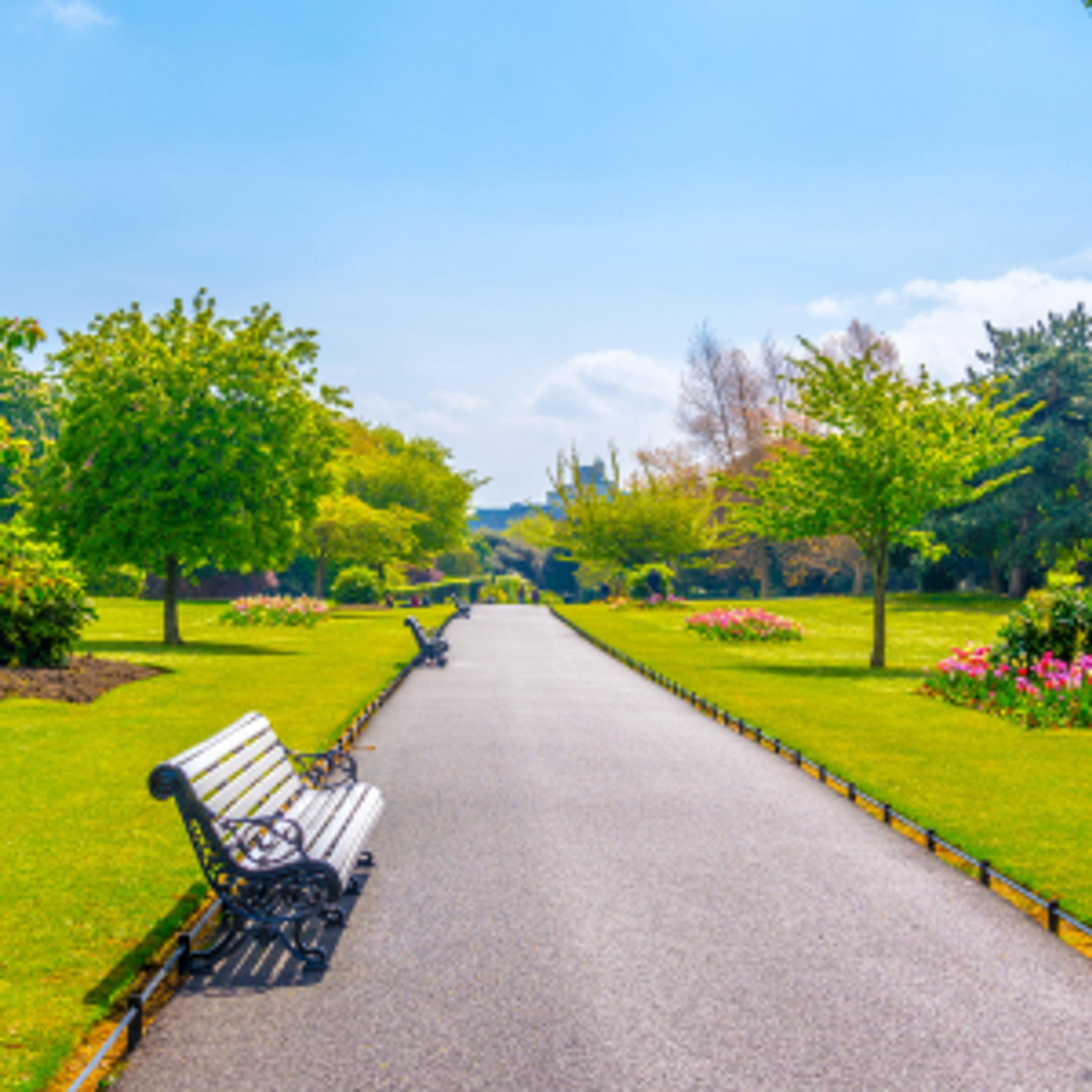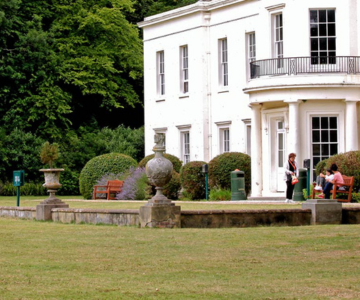
‘It’s behind you!’: A Guide to Christmas Pantomime in the UK
It’s officially festive season!
Evie Lucas
This week, we’re excited to introduce our Summer Centre in Ireland’s historic capital, Dublin. ‘The city of a thousand welcomes’ might be best known for its Guinness, but there is more to discover beyond its staggering 772 pubs. From the iconic painted doors of Merrion Square’s Georgian townhouses to the newly decked-out Docklands, Dublin is a cosmopolitan city with a world-famous literary heritage, vibrant music scene, and understated coolness at every corner. What makes the Irish capital special, however, is its love for ‘good craic’, a Gaelic expression describing a good time, fun experience, or friendly conversation. This is a city of living culture, with the people at its centre.
Students will stay in one of Ireland’s leading boarding schools, King’s Hospital College. Built on a 100-acre wooded estate on the banks of the river Liffey, the school was founded in 1669 and offers modern boarding suites and social spaces for students to relax and unwind after a day of learning. Just 10 minutes from one of Ireland’s largest shopping and entertainment centres and 20 minutes from the city centre, it’s the perfect place to learn English.

James Joyce, perhaps Dublin’s most iconic writer, once said that ‘when I die, Dublin will be written on my heart’. It’s no surprise that Dublin was named UNESCO City of Literature in 2010: The capital is layered with the words of its celebrated artists, musicians, and writers. From The Museum of Literature, a haven for bookworms and history buffs, to Sweny’s Pharmacy, a real-life location in Joyce’s Ulysses, it’s still possible to retrace the footsteps of Ulysses’ protagonist across the city. Other prominent writers include Oscar Wilde, whose delightfully gaudy statue lives on in Merrion Square Park, and contemporary writer Salley Rooney, who used Trinity College, home of the ancient Book of Kells, as the setting for her bestselling novel-turned-TV series, Normal People.
Music beats at the heart of Dublin. The city has given rise to some legendary musicians, including U2, Sinead O’Connor, Kodaline, and Thin Lizzy. Temple Bar, a well-trodden tangle of cobblestone streets lined with brightly coloured pubs, is famous for its traditional Irish music and buzzy atmosphere. Musicians play Irish Trad here almost 24/7 but flash a smile in Sweny’s Pharmacy and you may be treated to your own private concert.
Did You Know?

Founded by Vikings in 841 AD, Dublin has a deep history and fascinating folkloric tradition. Irish author, Bram Stoker, even took inspiration from Dublin’s Gothic streets and inner-city folklore when writing the world’s most iconic vampire novel, Dracula.
While students can explore the city’s Viking legacy in Dublinia, located in Dublin’s striking Christchurch Cathedral, it’s also present in the unlikeliest of places. Hidden behind the jumbled shelves of Aungier Street’s Lidl is a literal window into a collection of Medieval ruins discovered when the shop was built. Instead of building over the 11th century remains, Lidl made it a central feature of the store. In a city that never takes itself too seriously, the quirkier attractions don’t stop there: The National Leprechaun Museum showcases Irish folklore and mythology through the oral tradition of storytelling and the volunteers of St Michan’s church will take you on a spooky tour of the church’s crypts, filled with dust-covered mummies and echoes of urban legends.
Dublin’s revolutionary past is still remarkably present. Along O’Connell Street is the grand General Post Office, famous for playing a pivotal role in the 1916 Easter Rising as the headquarters of the Irish volunteers. While still a working post office, visitors can step back in time at the GPO’s immersive museum. Dublin is also home to one of the largest unoccupied gaols in Europe, Kilmainham Gaol. What makes it remarkable, however, are the many famous faces that have been behind its bars. Opened in 1796 and closed in 1924, its empty halls are now an eerie evocation of Ireland’s struggle for independence.

One of the benefits of our summer courses is the unique opportunity to combine language study with cultural immersion, meaningful connections, and authentic speaking practice. Students will explore everything Dublin has to offer on four half day excursions, as well as embarking on several longer trips to Ireland’s most stunning locations. These include the monastic city of Glendalough, a fairy tale landscape of pristine lakes, early medieval sites, and snow-topped mountains, and Causey Farm, where students can experience traditional Irish farm life surrounded by picturesque countryside.
Students on our Platinum Package will benefit from an extra day trip to Malahide, a beautiful coastal village boasting crystal clear water and a 12th-century castle.
Are you interested in our Dublin Summer Centre? Click here for more information.

It’s officially festive season!

This week, we’re introducing our Summer Centre in Eastbourne!

The Old Smoke.
We use technology on our website to personalize content, customize and measure advertising, and analyze website traffic. By clicking OK, you agree to the use of these technologies in their entirety.
Learn more in our Privacy Policy.